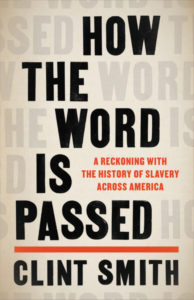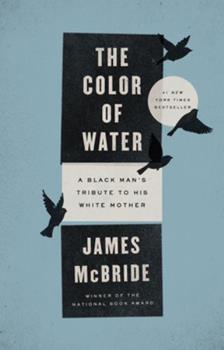Book Review: How The Word Is Passed
 Last February, I attended the annual Winter Institute virtually hosted by the American Booksellers Association. I was there as a steering committee member for my local bookstore, Rozzie Bound. I had never attended a whole conference conducted online before. It was a wonderful experience, and I wish all conferences are done online, even after the pandemic. One of the cool things about it was I was able to select advanced reader copies (ARC) of new books coming out in the next few months and have them delivered to me for free. I will be reviewing some of those books here in the next few weeks.
Last February, I attended the annual Winter Institute virtually hosted by the American Booksellers Association. I was there as a steering committee member for my local bookstore, Rozzie Bound. I had never attended a whole conference conducted online before. It was a wonderful experience, and I wish all conferences are done online, even after the pandemic. One of the cool things about it was I was able to select advanced reader copies (ARC) of new books coming out in the next few months and have them delivered to me for free. I will be reviewing some of those books here in the next few weeks.
One of the books I selected was Clint Smith’s book How The Word Is Passed: A Reckoning with the History of Slavery Across America. Smith is an activist and writer for The Atlantic. He also used to be on the podcast Pod Save The People. Whenever I listened to him on the podcast, I found him a brilliant and thoughtful person. So when I saw his book was an available ARC, I immediately requested it because I know I would get a good history lesson.
And I wasn’t disappointed. I loved the book!
How The Word Is Passed focuses on how America remembers slavery through physical landmarks. The book attempts to answer many questions. Are we doing a good job at this remembrance? Are we telling the truth about these landmarks to ourselves? What do they say about America? Smith goes beyond the debate around Confederate monuments and tries to answer these questions. He visited places dedicated to our collective memory on slavery like Monticello, Whitney Plantation, Blanford Cemetary, Juneteeth celebrations in Texas, and Senegal’s Gorée Island. The book is well researched and does a great job examining how America is reckoning with this history.
He also talks about history that is hidden in plain view, like Central Park. I only found out a couple of years ago that a thriving black community used to live in the area we now know as the famous park called Seneca Village. The rich, white New Yorkers wanted to have a park similar to those in Europe. In what probably was the first gentrification act in New York, the Black folks were violently forced out of the village in the 1850s, and developers raised all the buildings to create the park we all know today. I remember going on a three-hour walking tour of Central Park about five years ago, and the tour guide never mentioned any of this dark history. The guide made it sound like the park was a vacant, unused parcel of land before Frederick Law Olmsted created the park.
The most disturbing part of the book is when the author visits Angola – a slave plantation turned into a prison that got its start with “convict leasing” – or slavery by another name. Today Angola Prison also has a museum “celebrating” its storied history, minus any mention of slavery, a golf course, a guesthouse, and the Angola Rodeo. Yes, a rodeo! According to the rodeo’s website, it includes activities like “Convict Poker, where four offenders play poker seated at a table with a loose bull, and the last sitting offender wins.” The rodeo also includes “Prisoner Pinball,” where offenders stand in randomly placed hula-hoops with a loose bull and the last offender still in their hula-hoop wins.” Think of Disney with cellblocks!
Several of the landmarks bring up issues of truthfulness and “storytelling,” whether it is the stained windows at Blanford Church, the Lost Cause messaging from the Sons of Confederate Veterans, or the actual number of enslaved people who came through the House of Slaves. I wonder in the cases of Blanford and Gorée if the storytelling has more to do with tourism and the financial incentive. Blanford Church is part of a memorial for Confederate soldiers buried in the adjacent Blandford Cemetary in Virginia. When Smith toured the church, all the guide wanted to talk about were the famous windows and not about the Confederacy’s role in wanting to keep slavery alive. Many tourists today only go to slave plantations and other similar landmarks just to hear a “nice story.” Unfortunately, places like Blanford are catering to that “whitewashed” market. Oh, slavery wasn’t that bad. Look at the lovely windows! It’s like going to Auschwitz and not wanting to hear about the Holocaust!
On the Gorée tour, Smith was told that millions of enslaved people came through the Door of No Return. Not only is this number exaggerated allegedly, but there is even a question about how relevant Gorée is in transatlantic slave trade history. Gorée Island is a significant tourist destination in Senegal and a UNESCO World Heritage site. Many people in Dakar financially benefit from the island’s high profile and tourist money, even if these exaggerations started by House of Slaves’ original curator Boubacar Joseph Ndiaye in 1962 persisted. In my opinion, there is a financial incentive to keep the lie going. Many historians still argue that the number of enslaved people coming through there isn’t as important as its place in the collective memory of what the House of Slaves represents.
Smith ends the book with more questions for the reader. How do we fill these historical gaps when we don’t always know if the information we are being told is true, false, or “sincere fiction”? I don’t think we will ever know, but we should work towards having more honest information.
How The Word Is Passed: A Reckoning with the History of Slavery across America by Clint Smith. Available June 1, 2021, from Little, Brown, and Company. Buy the book here.


